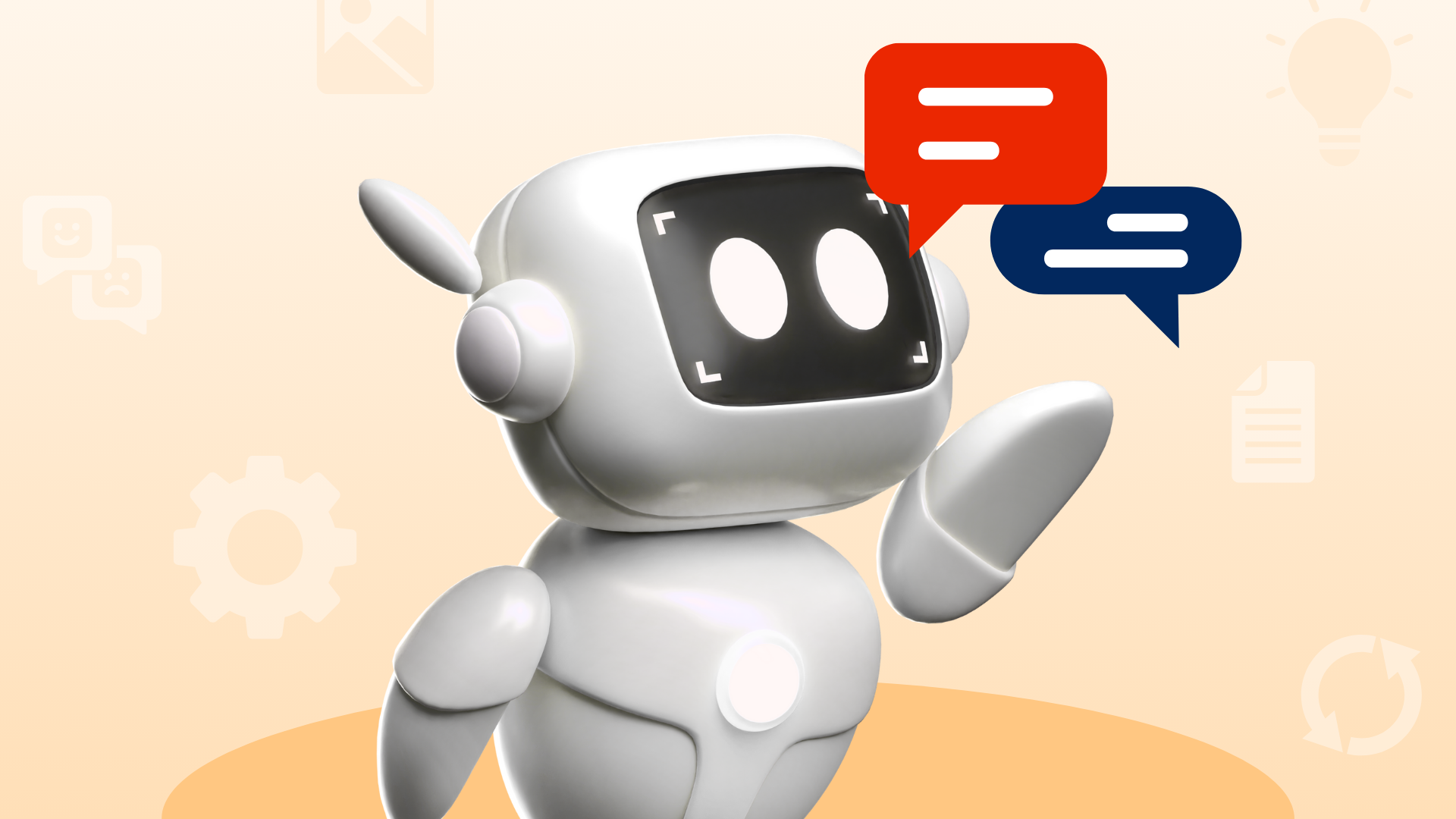Can AI Do More Than Just Talk?


The AI We Know
Most of us have interacted with AI through tools like ChatGPT, Gemini, Microsoft Copilot, or other conversational models. These are brilliant at generating text—whether it’s drafting an email, writing a poem, or explaining quantum physics in simple terms. Need a recipe for dinner or a quick marketing tagline? They’ve got you covered with fast, polished responses. But as impressive as these tools are, they’re primarily talkers. They provide ideas, answers, or content, and then it’s up to you to take the next steps. So, what if AI could do more than just talk? What if it could act on its own to get things done?
Chatbots vs. Conversational AI: What’s the Limit?
To grasp the future of AI, it’s worth understanding the tools we use today. AI has evolved rapidly, but not all systems are created equal. Some are built for narrow tasks, while others tackle complex challenges with ease. Let’s break down the differences between traditional chatbots and conversational AI to see what they can—and can’t—do.

Chatbots work well in structured environments where the questions and answers are predictable. But once the conversation goes off-script, they often struggle.
Conversational AI brought a big leap forward. These models can generate ideas, draft content, and even simulate conversations with creativity and context. But even with all their intelligence, they’re still just giving you the answers—you still have to take the next steps.
Enter AI Agents: The Next Step
This is where AI agents come in—a new breed of AI designed not just to talk, but to do. Unlike chatbots or conversational models, AI agents are autonomous systems that can perceive their environment, make decisions, and execute tasks to achieve specific goals. Think of them as digital teammates who don’t just suggest ideas—they roll up their sleeves and get to work.
How AI Agents Work
AI agents operate through a combination of perception, reasoning, and action. Here’s a breakdown of their core functionalities:
- Perceive and Analyze: Agents take in data from their environment—think emails, CRM updates, website analytics, or even IoT sensor data. They process this information to understand the context and identify what needs to be done.
- Plan and Decide: Using predefined goals or machine learning, agents create a strategy to tackle a task. They can prioritize actions based on urgency, relevance, or strategic importance.
- Act Autonomously: Agents execute tasks without constant human input. This could mean sending an email, updating a database, scheduling a meeting wards, or triggering an API call.
- Learn and Adapt: Many agents use machine learning to improve over time. They analyze outcomes, refine their approach, and become more effective with experience.
- Integrate with Tools: Agents connect seamlessly with systems like Slack, Salesforce, Google Calendar, or Zapier, allowing them to operate within your existing workflows.
These capabilities make AI agents powerful for handling multi-step, complex tasks that conversational AI can’t touch. They’re not just generating ideas—they’re putting them into action.
Agentic Functionalities: What Makes AI Agents Unique
What sets AI agents apart is their agentic nature—the ability to act independently and proactively. Here are the key agentic functionalities that define them:
- Goal-Oriented Behavior: Agents are driven by objectives, like “increase customer engagement” or “streamline operations.” They break down these goals into actionable steps and execute them systematically.
- Contextual Awareness: Agents don’t operate in a vacuum. They understand the broader context—like customer history, business priorities, or market trends—and tailor their actions accordingly.
- Proactive Decision-Making: Unlike reactive systems, agents anticipate needs. For example, they might detect a drop in website traffic and initiate a diagnostic process before you even notice the issue.
- End-to-End Task Automation: Agents can handle entire workflows. Instead of just drafting a report, they might collect data, analyze it, format the results, and distribute it to the right people—all in one go.
- Error Handling and Recovery: If something goes wrong—like an API failure or an ambiguous instruction—agents can often detect the issue, adjust their approach, or escalate it to a human when needed.
These functionalities make AI agents less like tools and more like collaborators, capable of taking ownership of tasks from start to finish.
Real-World Examples of AI Agents in Action
AI agents are already transforming industries by automating complex processes. Here are some practical examples of how they’re being used (without tying to any specific brand):
- Marketing: An AI agent monitors a digital ad campaign in real-time. When it detects underperforming ads, it analyzes audience engagement data, adjusts the budget allocation to favor high-performing segments, and schedules a new A/B test—all without human intervention.
- Sales: A lead visits a website and downloads a whitepaper. An AI agent tracks this activity, updates the CRM with the lead’s details, sends a personalized follow-up email, and assigns a task to the sales team for a follow-up call.
- Customer Support: A high-priority support ticket arrives. An AI agent prioritizes it based on keywords (like “urgent” or “outage”), routes it to the right team, and logs the issue in a ticketing system, reducing response time.
- Operations: An AI agent automates inventory management by monitoring stock levels, predicting demand based on historical sales data, and placing reorders with suppliers when stock falls below a threshold.
- Healthcare: In a hospital, an AI agent analyzes patient data to flag potential issues (like abnormal lab results), schedules follow-up tests, and notifies the care team, streamlining patient care. Innovaccer has introduced AI agents that access a comprehensive 360-degree view of patient information, drawn from unified clinical and claims data. These agents enable deep healthcare context for tasks such as scheduling, follow-ups, and care coordination, minimizing errors and redundancies.
These examples show how AI agents go beyond answering questions—they drive outcomes by handling workflows that would otherwise require multiple human touchpoints.
Are AI Agents the Same as Conversational AI?
Not at all. While they may appear similar at a glance, their core functions and outcomes differ significantly. Here's a comparison to clarify:

Conversational AI, like ChatGPT, is a brilliant starting point for generating polished content or insights. However, it stops at delivering the output—you take it from there. AI agents, by contrast, are built to act, transforming ideas into tangible results by reasoning and executing tasks independently.
Why AI Agents Matter
AI agents aren’t just about saving time—they’re about amplifying what you and your team can achieve. By automating repetitive or multi-step tasks, they free you to focus on high-value work, like strategy, innovation, or building relationships. They don’t replace your tools or people; they enhance them, creating smoother workflows and faster results. In a fast-paced world, having a system that proactively moves the needle can be a game-changer.
The Future: AI as a True Partner
AI has already reshaped how we think, create, and communicate, but its potential is far from tapped. AI agents represent the next frontier—not just tools that respond, but partners that act. They’re like the colleague who’s always one step ahead, handling the details so you can focus on the big picture. The future isn’t about AI taking over—it’s about AI working alongside you, smarter and more capable than ever.
Coming soon: Build your own AI agents.
Want to see what AI agents can do for your team? With the upcoming Eriko AI Agent Builder, you’ll be able to automate routine tasks and unlock new possibilities tailored to your workflows. Discover how agentic AI can elevate the way you work — because the future of work isn’t just about conversations, it’s about intelligent action.




